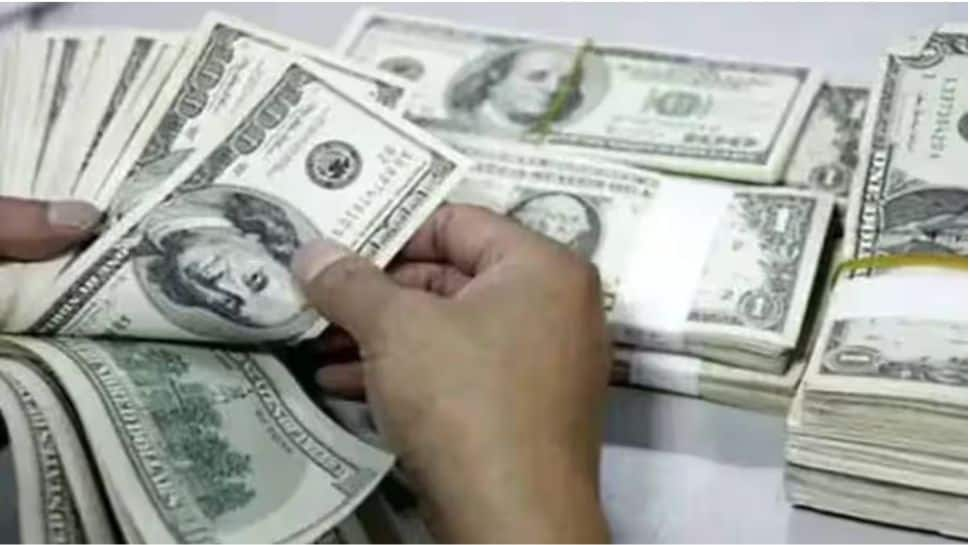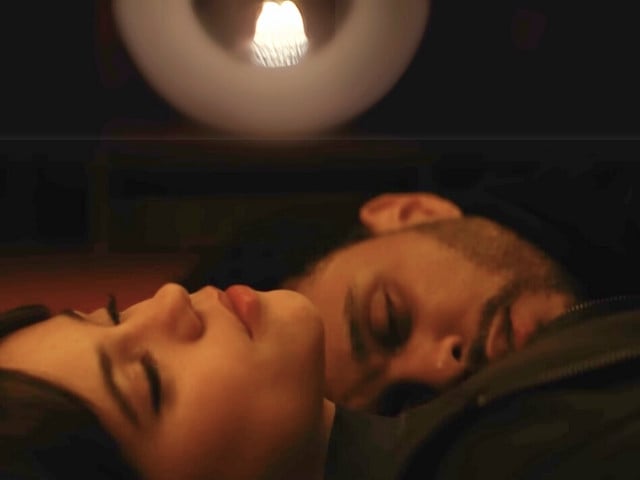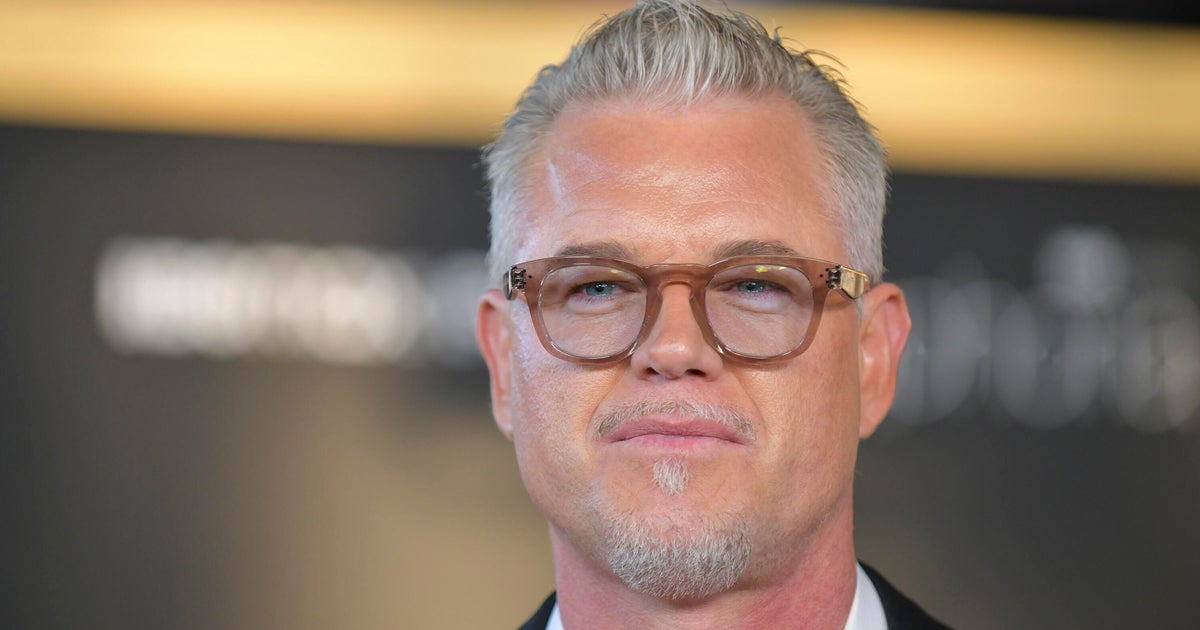This week in Newly Reviewed, Martha Schwendener covers Jutta Koether’s moody expressionist paintings, Ina Archer’s “Black Black Moonlight: A Minstrel Show” and Susan Weil ‘s pastel “Spray Drawings.”
Upper East Side
Jutta Koether: 1982, 1983, 1984
Through July 27. Galerie Buchholz, 17 East 82nd Street, Manhattan; 212-328-7885, galeriebuchholz.de
“What do you want,” Jutta Koether wrote in 1984 about the band the Cramps on the occasion of its raucous, triumphant debut in Paris, “sex, fun, hysteria, a racket from battered amplifiers and abused guitars, sweaty bodies, dirt, sleazy chords and the feeling that a garage is still the best place for music?”
Koether’s writings, which appeared in the German pop-culture magazine SPEX in the 1980s, are famous for her smart, tough takes on art and music. If you were not fortunate enough to get your hands on a copy of the original print editions, in German, you’ll have the chance in “Jutta Koether: 1982, 1983, 1984” at Galerie Buchholz. The exhibition includes a binder of her writings, translated into English, as well as her earliest, dark expressionist paintings.
The paintings and writings are of a piece. “Announcing the marriage of existentialist black shades with the spiked leather collar of rock ’n’ roll,” she wrote in 1984. “To celebrate, Sonic Youth has released a new EP.” The canvases have a similar spiked, existentialist swagger. The palettes are moody and the surfaces are stubbly. Some works here are abstract, others feature gaunt, alien faces, surrealistic shapes or a pair of limbs wrapped for battle, which turns out to be a female boxer.
But there’s also a sense of nostalgia. The bands written about are gone, and many of the performers, like Nico and Lou Reed, are no longer with us. Similarly, Koether’s paintings feel very much from another time, which could be the 1910s or the 1920s — the original era of disaffected German expressionism — or the gritty 1980s. Nonetheless, battered amplifiers, sleazy chords and a garage to play them in are still great models for music, and art.
Chelsea
Ina Archer
Through July 27. Microscope Gallery, 525 West 29th Street, Manhattan; 347-925-1433, microscopegallery.com
“To Deceive the Eye,” a show by the experimental filmmaker and artist Ina Archer, hinges around a 1933 Bing Crosby film, “Too Much Harmony,” that features a song titled “Black Moonlight.” In that musical number, white chorus girls morph into Black performers through the use of special effects — a kind of technological blackface.
Archer’s 2024 video installation, “Black Black Moonlight: A Minstrel Show,” includes footage from “Too Much Harmony” and other minstrel performances. The images are arranged with clips from James Baldwin’s famous 1965 debate with William F. Buckley Jr. about the American dream. Additionally, the walls are lined with Archer’s watercolors of dolls and figurines, some racially charged, and a short 16-millimeter film, “Trompe l’oeil: Black Leader” (2023), that features color charts and mannequin heads that allude to the difficulty of capturing dark skin on celluloid film.
Other Black artists, like Adrian Piper and Arthur Jafa, have made works extracted from Hollywood archives. What Archer brings is a canny sense of the bewitching potential of celluloid. Manipulating the archive into an art object, she seduces you into watching — and staring at — the appalling ways racism has manifested in cinema.
Tribeca
Susan Weil
Through July 26. JDJ, 370 Broadway, Manhattan; 212-220-0611, jdj.world
Susan Weil is lodged firmly in art history, but in an auxiliary way. After attending the famed Black Mountain art school in North Carolina in the 1940s, she married Robert Rauschenberg and the two made a series, “Blueprints” (1949-1951), by capturing human bodies on light-sensitive paper. The body-silhouette idea has been explored by many artists, including David Hammons and Keltie Ferris, but Weil remains a lesser-known figure. Now 94 years old, she is still painting and writing poetry, and you can see 50 years of her work at JDJ in Lower Manhattan.
Those works, from 1969 to 2023, show a consistently clever approach to representing the body in two dimensions. A selection of pastel “Spray Drawings” from the early 1970s looks at first like geometric abstractions, until you realize that you’re seeing the outlines of arms and legs and torsos. “Walking Figure” (1968), made with spray paint on plexiglass, revamps the 19th-century photographer Eadweard Muybridge’s “human locomotion” experiments. Other works approach landscapes in a wildly inventive way, like “Soft Landscape” (1972), with its horizontal bands of earth and sky painted on canvas that has been draped from the wall like a jacket hung on a peg.
Recent works use opalescent or iridescent interference paint that causes the image to shift when viewed from different angles. Here, Weil tracks phases of the moon or the trajectory of the sun. Throughout, the common thread is a gentle, playful way of observing bodies, planets and the act of art making.
Last Chance
Gramercy Park
Farkhondeh Shahroudi
Through July 3. Goethe-Institut New York, 30 Irving Place, Manhattan; 212-439-8700, goethe.de/ins/us/en/.
The artist Farkhondeh Shahroudi was born in Tehran 17 years before the 1979 Iranian Revolution that brought an oppressive Islamist government to power. She studied painting and stayed in her home country until 1990, when she sought political asylum in Germany, where she still lives.
This history informs Shahroudi’s art, on view for the first time in the United States in the exhibition “Of Weeping Trees” — but in a nuanced way. It’s useful to know the symbolism of the green and red she uses (colors on the Iranian flag), but that doesn’t offer a simple key to Shahroudi’s world. She comes at politics through poetry, with sculptures, paintings and videos that are far more evocative than didactic. Some of the work has a dark edge — for instance, “Net” (2021–24), which is woven from artificial hair and looks like a cage, especially with chains weighing it down. But other pieces are more playful, their meaning more slippery. “Ffoossiillllllll” (2024), with its droopy appendages dangling on a pole, could be a creature or a tree, alive or dead.
Shahroudi is interested in repetition, as evidenced by her use of language: Words in German, Farsi and English appear throughout, from the automatic writing on the institute’s street-facing window to conceptual videos featuring recurring actions and images. Sometimes the text is absurdist, gesturing toward meaningless; other times it’s a powerful incantation. The show’s installation is a bit crowded, but that may be fitting. It feels like Shahroudi is continually staging and iterating a set of questions. JILLIAN STEINHAUER
Chelsea
Charles Ray
Through June 29. Matthew Marks Gallery, 522 West 22nd Street, Manhattan; 212-243-0200; matthewmarks.com.
Charles Ray is very good at white. He’s also good at silver, gray, variations of scale, excess and precision. But the three sculptures in this unfathomably elegant show — a 24-inch crashed car made of cut Japanese paper, a blurry nine-foot-tall, cast-paper-pulp woman, and two naked marble men lying on a slab — are all bright, bleachy white.
Whiteness of this kind offers all sorts of classical and scientific connotations for Ray to leverage and distort. And the pieces certainly have the undercurrent of horror that Herman Melville diagnosed in the “Whiteness of the Whale” chapter of “Moby-Dick,” in part because in a white-cube gallery they mess with your sense of where the walls are. But mainly what struck me about them was how many subtleties of light and texture they let me see, particularly on “Two dead guys.”
The surfaces of these two supine, naked, machined, slightly larger-than-life men have been sanded but not polished. Fine gray impurities floating just under the surface become freckles or veins, and if you lean in close, you can sometimes see fingerprint-like grooves. The men’s faintly protruding nipples, catching the light differently than their smooth chests, were only just discernible. And as I crouched down to examine the sole of one foot, I discovered a minuscule bright red dot. Before I could notify the attendant, the dot began to move: It was a spider that must have fallen from someone’s jacket or crawled up from the floor. I wouldn’t have noticed it anywhere else. WILL HEINRICH
NoHo
Lauren dela Roche
Through June 29. Eric Firestone Gallery, 40 Great Jones Street, Manhattan; 646-998-3727; ericfirestonegallery.com.
Naked women lounge across cotton feed sacks mounted on stretcher bars in “No Man’s Land,” the self-taught painter Lauren dela Roche’s debut show with the Eric Firestone Gallery. Their heads all have the same dark hair and fine features, as if copied from the cover of a single Victorian calendar, and are two or three sizes too small for their statuesque bodies. An unbroken vista of fountains, butterflies, flowers, shallow tunnels and swans with chili-pepper beaks extends behind them.
Apart from their stockings and socks and the circles of red on their cheeks, the women are left the unpainted color of the sacks, which ranges from nearly white to cream of wheat, sometimes in a single figure. Occasionally one of the women wears an old brand name or farmer’s name like a tattoo: “Cincinnati Seamless” on a crotch, “Al Dumdey” on a leg. The feed sacks are also mended here and there, and the backgrounds balance the beige expanses of flesh with plenty of black and dark green.
It’s hard not to think of the great outsider artist Henry Darger (1892-1973), despite all the differences in the emotional tone of his and dela Roche’s work. She uses the same drifting, dreamy, not quite flat organization of space and a similar kind of 19th-century drawing that has more in common with cartography than figure study. Most of all, though, the chimeric reduplicating woman she keeps returning to suggests an unresolved fixation, like Darger’s, on the equally unresolvable incongruity at the heart of human life — that union of the carnal and the ethereal that we call sex. WILL HEINRICH
Life Cycles: The Materials of Contemporary Design
Through July 7. Museum of Modern Art, 11 West 53rd Street, Manhattan; 212-708-9400, moma.org.
My favorite clock of all time is a video: A camera looks down onto two skinny mounds of garbage, maybe 20 and 15 feet long, meeting at one end like the hour and minute hands on a watchface; for the 12 hours of the video, we see two men with brooms sweeping these “hands” into ever new positions, at a pace that keeps time.
The piece is by the Dutch designer Maarten Baas, and it’s among the 80 works in “Life Cycles: The Materials of Contemporary Design,” a group show now in MoMA’s street-level gallery, which has free admission.
The “materials” of today’s most compelling design turn out to be ideas, even ethics, not the chrome or bent wood that MoMA’s title would once have invoked. This show’s ethical ideas center on the environment and how we might manage not to abuse it.
Baas’s “Sweeper’s Clock,” is perfectly functional — could I view it on an Apple Watch? — but it also works as a meditation on the Sisyphean, 24/7 task of dealing with the trash we generate.
All-black dishes by Kosuke Araki look very like the minimalist “black basalt” china designed by Josiah Wedgwood way back in 1768 (it’s some of the oldest “modernism” claimed by MoMA) except that Araki’s versions are made with carbonized food waste.
Food not at all wasted, but consumed — by cattle — goes into making Adhi Nugraha’s lamps and speakers, as explained by the title of the series they’re from: “Cow Dung.” BLAKE GOPNIK
More to See
TriBeCa
‘Threads to the South’
Through July 27. Institute for Studies on Latin American Art (ISLAA), 142 Franklin Street, Manhattan; islaa.org.
For decades, textile art was trivialized as “craft” and “women’s work” by mainstream U.S. institutions. That longstanding bias has started to erode, but countless fiber art practices remain underexplored. “Threads to the South,” a thrilling exhibition curated by Anna Burckhardt Pérez, spotlights some of them.
The show focuses on Latin America, a region with long and varied thread-based traditions. Many of the 22 artists from 10 countries draw on these heritages, including Julieth Morales, a member of Colombia’s Misak Indigenous community. Her piece “Untitled” (2022) is woven in the style of a striped Misak skirt, but hangs instead as an unfinished banner from the ceiling — a statement of pride and possibility.
The exhibition is intergenerational, but the knockouts are mostly older. Among them are Olga de Amaral’s “Tapete — Número 330” (1979), a checkered wool and woven leather rug; Nora Correas’s “En Carne Viva” (1981), an animalistic bundle of dark red and fuchsia wool forms; Jorge Eielson’s “Amazonia XXVII” (1979), a cross between ancient Andean and Western postmodernist traditions; and Feliciano Centurión’s embroideries on synthetic blankets from the 1990s. These disparate works are alternately visceral and cerebral, intimate and chic. They expand the canon and common understanding of fiber art and who makes it.
Themes emerge throughout the show, but ultimately “Threads to the South” is about identity. Not in a reductive way, as has often been the case in the U.S. Rather, the exhibition argues convincingly that because fabric is at the root of so much Latin American art and life, it deserves, even demands, to move from the margins to the center. JILLIAN STEINHAUER
‘Painting Deconstructed’
Through Aug. 18. Ortega y Gasset Projects, 363 Third Avenue, Brooklyn; oygprojects.com.
What makes a painting a painting? Is it the application of color to canvas or board? The fact that it hangs on a wall? What about different types of art that are informed by painting’s histories and conventions? Where should we draw the line (pun intended)?
These are some of the questions raised by “Painting Deconstructed,” an exhibition featuring 46 contemporary artists who work in a wide range of mediums and materials. That’s what makes the show equally smart and fun: You won’t find a straightforward painting anywhere. Instead you’ll find pieces made of ceramics, fabric, photography, and even balloons that evoke paintings, and paint applied to all manner of surfaces, including T-shirts and palm husk.
For me, looking back and forth between the artworks and checklist became a kind of treasure hunt. I wanted to find out what elements made up Scott Vander Veen’s wonderfully tactile “Graft #2 (Thigmomorphogenesis)” (2023). Learning that Jodi Hays used a found plein-air painting kit in her weathered “Self Portrait at 61” (2024) made me chuckle.
Kevin Umaña’s “Split Apple Core” (2023) is a technical marvel: a complex and sumptuous ceramic work that could be an abstract painting. I delighted in the conceptual cleverness of Erika Ranee’s multimedia and nonrepresentational “Selfie” (2024), which includes black-eyed peas, a plant and the artist’s hair dipped in acrylic.
There’s remarkable skill on view throughout “Painting Deconstructed,” but it doesn’t feel like it’s being deployed solely for technical ends. These artists experiment in order to open up the category of painting. They use what it has been to imagine what it might yet be. JILLIAN STEINHAUER
Chinatown
Pat Oleszko
Through July 20. David Peter Francis, 35 East Broadway, No. 3F, Manhattan; 646-669-7064; davidpeterfrancis.com.
Pat Oleszko has performed at MoMA, the Whitney, P.S. 1 and P.S. 122, but “Pat’s Imperfect Present Tense,” at David Peter Francis in Chinatown, is her first solo show in nearly 25 years. As you’d expect, it’s overflowing with five decades’ worth of hats, costumes, signs and videos that delight in subversion and take subversively uncomplicated pleasure in delight.
In “Footsi,” two fingers in tiny shoes and socks tiptoe across a woman’s naked belly. In “Where Fools Russian,” Oleszko takes aim at Cold War paranoia, “Dr. Strangelove” style, by putting on a dozen layers of clothing and submerging herself in the Atlantic. There’s an enormous inflatable pelvis through which she can give birth to herself (“Womb With a View”), a “coat of arms” made for the 50th anniversary of the Surrealist Manifesto and a similar but more revealing “handmaiden” costume designed for a striptease in Japan. The punning is relentless.
There’s a clear feminist bite to much of this, and a frequent political edge that ranges from pointed to broad. There’s even a light tweaking of art-world categories, since you’re never quite sure if these are sculptures masquerading as costumes or vice versa. But the real subversion here is simply Oleszko’s full-scale refusal to take herself, or anything else, seriously: It’s hard to participate in this kind of humor, even as a viewer, without losing hold of whatever serious, oppressive trip you may have walked in with. WILL HEINRICH
East Harlem
‘Byzantine Bembé: New York by Manny Vega’
Through Dec. 8. Museum of the City of New York, 1220 Fifth Avenue, Manhattan; 212-534-1672, mcny.org.
In celebration of its centennial year, the Museum of the City of New York invited Manny Vega to be its first artist in residence. Fabulous choice. Vega is a native New Yorker and a treasure, with a nearly four-decade track record of visual scintillation behind him. The essence of that career is distilled in a 24-karat nugget of a survey, “Byzantine Bembé: New York by Manny Vega,” assembled by Monxo López, the museum’s curator of community histories.
Puerto Rican by descent, Vega was born in 1956 in the Bronx, raised there and in Manhattan, and an immersion in art came early. One of his first jobs after graduating from the High School of Art and Design was as a guard at the Cloisters, the Met’s branch in Upper Manhattan devoted to European medieval art. In 1979 he joined El Taller Boricua (Puerto Rican Workshop), the street-active artist collective and graphics workshop in the East Harlem neighborhood known as El Barrio.
In the early 1980s, he began traveling to Brazil, where he was initiated into Candomblé, an Afro-Atlantic religion that fuses West African Yoruba and Roman Catholic beliefs and has a vivid tradition of ceremonial art, including beaded banners and ritual utensils, both of which Vega has produced. Given these entwined influences, conventional distinctions between “high art,” “popular art” and “spiritual art” have never made sense to him, which explains the title of his show, “Byzantine” suggesting intricate formal polish; and “Bembé” evoking drum-driven religious worship that is also a party.
The mix is there in four small paintings he made in 1997 as studies for a set of mosaics commissioned by the Metropolitan Transportation Authority for the subway station at East 110th Street and Lexington Avenue. Brightly colored and packed with figures, the images depict El Barrio street life — neighbors jostling, vendors selling, bands playing — and give it a charge of devotional fervor, aural exultation. (A tour of other Vega commissions in East Harlem, all within walking distance of the museum, is well worth making, a highlight being his tender homage to the poet Julia de Burgos (1914-1953) on a building at East 106th Street and Lexington Avenue.)
Sound and movement are major components in Vega’s visual universe. Icon-like images of Ochun, the Yoruba goddess of dance, and St. Cecilia, the Roman Catholic patron saint of music, appear in the show as tutelary spirits. And there are others. One is the Barrio-born jazz musician Tito Puente, whose album covers Vega has reproduced as glass mosaics. And in a large ink drawing, as crisp as a woodcut, we find the assembled performers of Los Pleneros de la 21, a local dance and music troupe promoting traditional bomba and plena.
Maybe inevitably in the case of an artist coming from an immigrant background, and from a culture long, and still, devalued if not demonized in mainstream America, politics runs, like a bass note, throughout Vega’s art. In his case, though, it’s far less a politics of overt protest than of positive assertion.
In the work of this profoundly devotional artist, the presiding deity is also an immigrant. It’s Changó, the Afro-Atlantic spirit of justice and balance, and also of dancing and drumming. A watercolor painting of him closes the show, and it’s a classic Vega creation: formally precise, imaginatively stimulating, instantly accessible. And it has found just the right home. It’s on loan to the show from Supreme Court Justice Sonia Sotomayor who, a wall text tells us, displays it in her chambers in Washington. HOLLAND COTTER
Upper Manhattan
The Word-Shimmering Sea: Diego Velázquez / Enrique Martínez Celaya
Through July 14. The Hispanic Society Museum & Library, 613 West 155th Street, Manhattan; 212-926-2234, hispanicsociety.org.
There are places you can’t easily return to, like childhood or, for many migrants and refugees, the country where they were born. This was true for Enrique Martínez Celaya, who was born in Cuba and relocated with his family to Madrid when he was a young boy. Martínez Celaya, now almost 60, returned to Cuba only in 2019, but he has found a way of retrieving both childhood and homeland in this impressive exhibition at the Hispanic Society.
Large canvases by Martínez Celaya include blown-up snippets from his childhood notebook, surrounded by interpretations of waves and seascapes. In a stroke of kismet, the notebook from which these early drawings were copied was given to him by his mother and featured a reproduction of a painting on its cover: Diego Velázquez’s “Portrait of a Little Girl” circa 1638-42, which is in the collection of the Hispanic Society. That painting is displayed at one end of the room.
Objects and their historical hierarchies are irreverently jumbled in the show: Velázquez, the great Spanish painter, sits alongside Martínez Celaya’s childish doodles. In another series of paintings by Martínez Celaya, the “Little Girl” holds objects that he coveted as a boy. The exhibition also includes work by other artists, like the 1971 notebook of Emilio Sánchez, an artist born in Cuba in 1921 who never went back to his homeland after 1960. In the end, the subject of the exhibition is really an immaterial poetic thread in which memory is fleeting but art, in its various forms, connects people, places and history. MARTHA SCHWENDENER
Financial District
Christopher Wool
Through July 31. 101 Greenwich Street (entrance on Rector Street), Manhattan; seestoprun.com.
The dilapidated 19th-floor office space hosting Christopher Wool’s recent sculptures and paintings could not be more simpatico with them. In its state of abandoned tear-down, the venue offers melodious visual rhymes: electrical cords dangling from the ceiling ape Wool’s snarls of found-wire sculpture; crumbling plaster mirrors the attitudinal blotches of his oils and inks. Scrawls of crude graffiti or quickly penciled notes left by workmen emulate the tendril-like lines dragged through Wool’s globular masses of spray paint. The space is a horseshoe-shaped echo of Wool’s work — raw, agitated — and the restless elegance he wrenches from a feeling of decay.
Wool said he started to think about how environment affects the experience of looking at art when he began splitting his time between New York and Marfa, in West Texas. Photographic series he made there, like “Westtexaspsychosculpture,” depict forlorn whorls of fencing-wire debris that look like uncanny mimics of Wool’s own writhing scribbles, and which inspired scaled-up versions cast in bronze. (The Marfa landscape is fertile ground for New York artists. Rauschenberg made his scrap metal assemblages after witnessing the oil-ruined landscape of 1980s Texas, what he called “souvenirs without nostalgia,” a designation that’s appropriate here, too.)
Place has always seeped into Wool’s work. His photographs of the grime and trash-strewn streets of the Lower East Side in the 1990s — compiled as “East Broadway Breakdown” — aren’t included here, but “Incident on 9th Street” (1997), of his own burned-out studio, are. The chaos of those scenes repeat here, the wraparound floor plan and endless windows letting the city permeate the work, just as it did in their making. MAX LAKIN
SoHo
Robert Irwin
Through Aug 31. Judd Foundation, 101 Spring Street, Manhattan; 212-219-2747, juddfoundation.org. Public hours: Friday–Saturday, 1:00–5 p.m., or by appointment.
In 1971 Robert Irwin installed a 12-foot acrylic column in the ground floor of Donald Judd’s SoHo studio, a prism positioned to pick up light from the building’s large southern and western windows. Since the early ’60s, Irwin had been pushing the definition of art beyond objecthood, gradually reducing his work of distractions until he stopped producing salable art works. By 1970, he had abandoned his studio in favor of what he called a conditional practice: making subtle, barely perceptible interventions in architecture to tease out the marvels of visual potential. He viewed his installations merely as tools to induce the real art, which was perception — “to make people conscious of their consciousness.”
A later iteration of that work, “Sculpture/Configuration 2T/3L,” first exhibited at Pace in 2018, is on view in roughly the same spot (the hole bored through the floor 53 years ago remains, never filled). More advanced, formed by two columns of stuttering panels of teal and smoky brown acrylic, it’s beautiful, but its beauty is beside the point. It melts into the background, both there and not there. Sunlight catches a corner or flutters over a faceted edge as you move around it, splicing and refracting SoHo’s thrum, making it new.
The installation’s long run means the quality of natural light will change and so too will the effect. It’s a slow, affecting distillation of Irwin’s philosophy, which remains generously contra the art world’s relentless demand for novelty. Irwin, who died last year, refined an expansive vision, making us aware of the transitory, letting us see what was always there, for as long as we can. MAX LAKIN
Chelsea
Huong Dodinh
Through Aug. 16. Pace Gallery, 540 West 25th Street, Manhattan; 212-421-3292; pacegallery.com.
Buoyed by a great sense of calm, and even silence, the paintings in Huong Dodinh’s “Transcendence” represent an artist’s triumph after decades of pursuing concision by adopting a minimalist vocabulary. It is this Paris-based artist’s first-ever solo exhibition in the United States in her close to 60 years of painting.
Beginning with a rare 1966 figurative painting, whose colors seem to recall Pieter Bruegel the Elder’s “Hunters in the Snow,” the show progresses to the ’90s and to the last couple of years. Figuration falls away as the decades pass, the artist’s hand becomes less pronounced, and by the 2000s Dodinh’s central concerns emerge: light, density, transparency and how these interact with lines, forms and space. These come together gracefully in works like “Sans Titre,” from 1990, in which three sensual curves depict what could be mountains in a desert, or layers of women’s breasts.
Dodinh’s soft palette — a quiet but delightsome range of carton browns, light blues, and off-whites — originated from her first experience with snow in Paris, where her family fled from Vietnam in 1953 during the First Indochina War. She was a child in boarding school when she first witnessed snow and marveled at how it revealed subtle colors underneath when it started to melt. Subtlety, a hallmark of Dodinh’s work, is something she goes to great lengths to attain: She has always worked alone, without assistants, makes her own pigments, ensuring that every inch of her canvas is filled with an energy that is wholly hers. It has been a long solitary journey and after all these years, even while Dodinh masters the art of austerity, her work feels adorned. YINKA ELUJOBA
See the May gallery shows here.















































